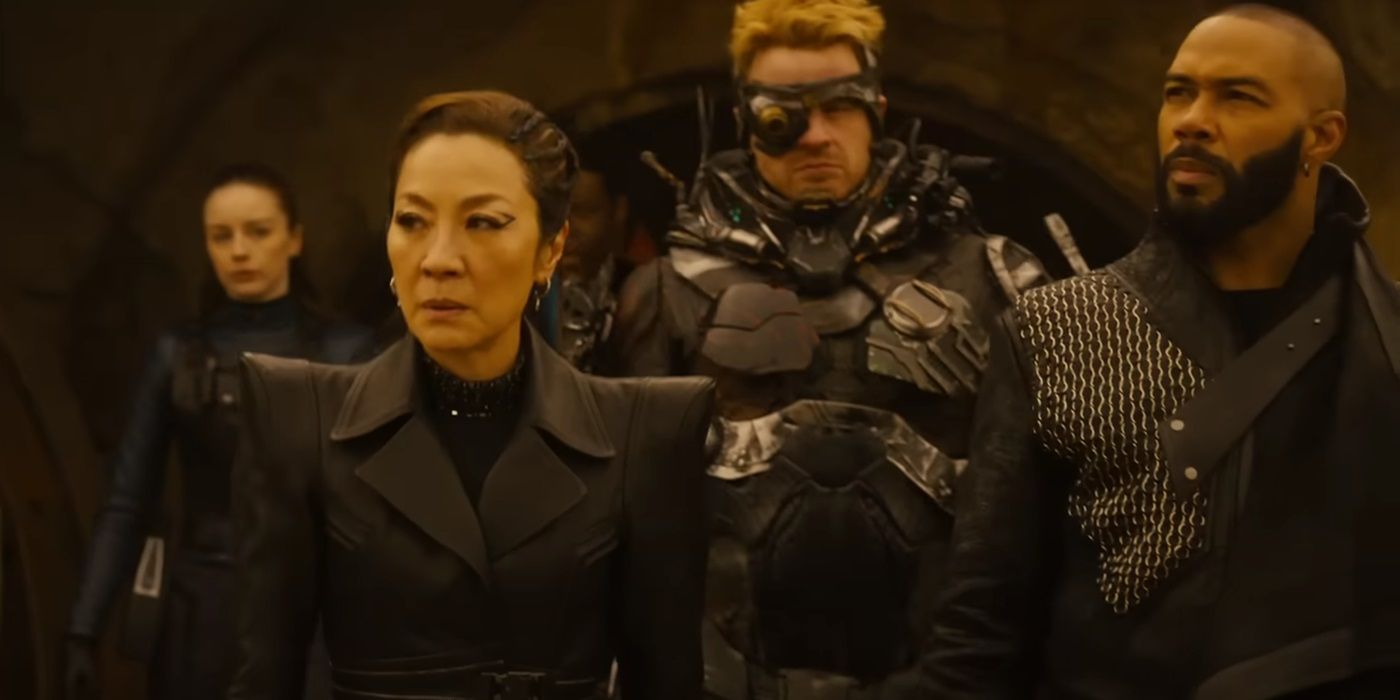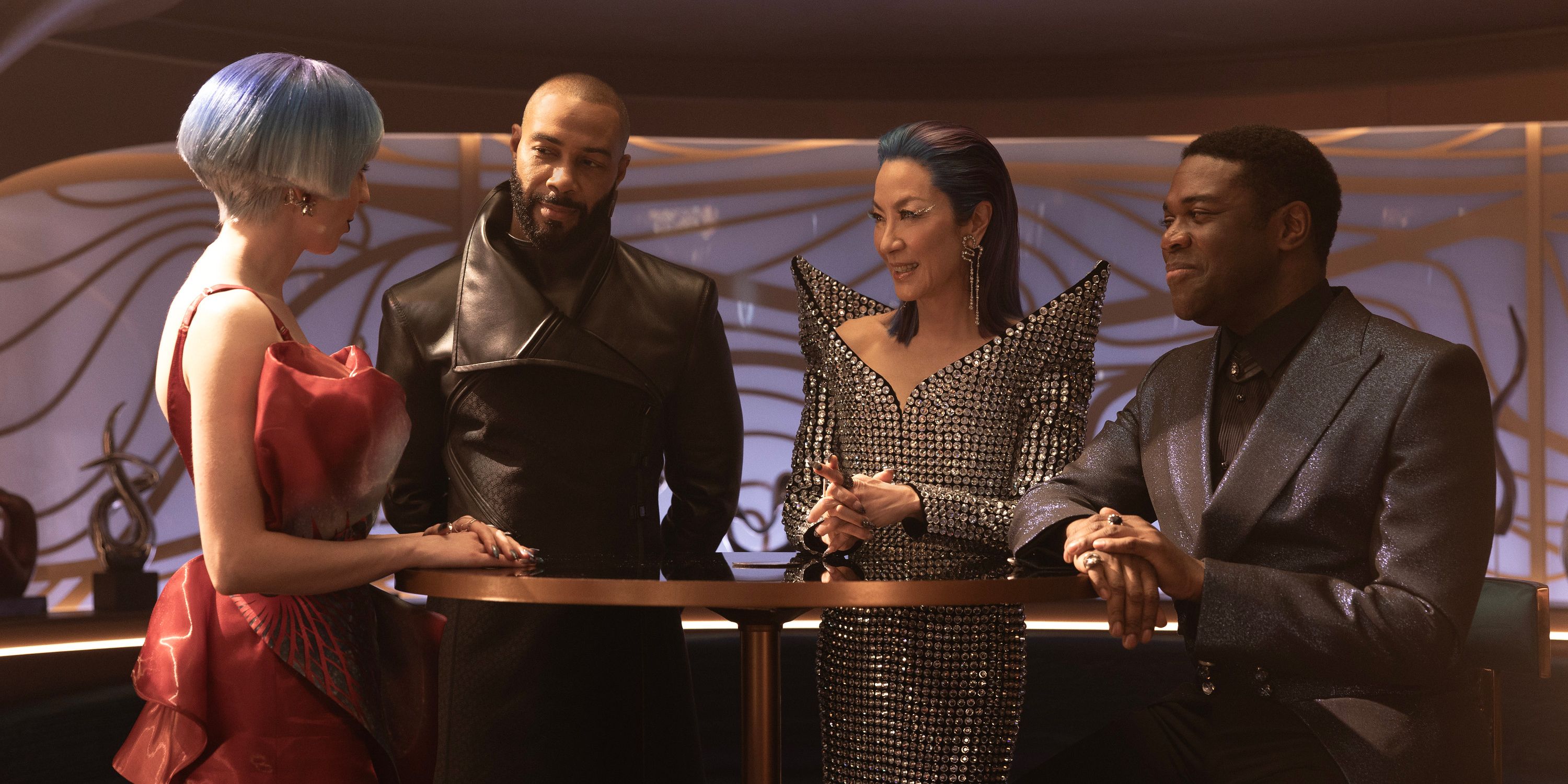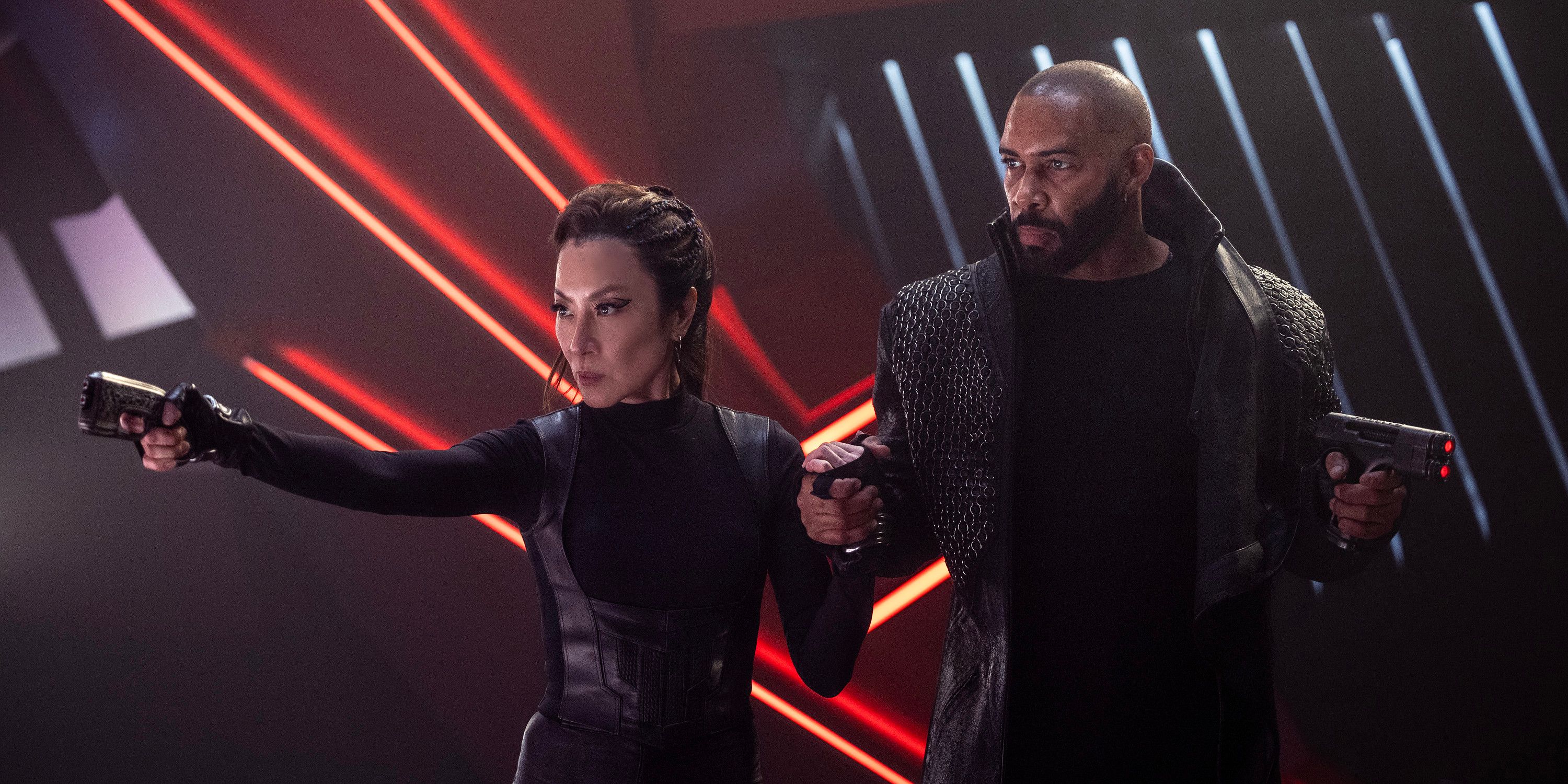In 2017, the Star Trek franchise revived its appeal, captivating Trekkies and sci-fi enthusiasts alike with the magnetic presence of Michelle Yeoh in a role set in the cosmos. Although her portrayal of Philippa Georgiou was brief, Star Trek: Discovery introduced one of the most intriguing narratives from the mirror universe, showcasing the evolution of the Terran empress. Despite discussions surrounding a potential spin-off focusing on Georgiou’s adventures with Starfleet’s covert operations in Section 31, the series never materialized. Following her departure from the show, Yeoh won an Oscar for Best Actress for her role in Everything Everywhere All at Once, further complicating her availability for a television series.
Nonetheless, Yeoh’s passion for her Star Trek character persisted, leading her back for a final adventure in a Section 31 television movie. While fans relish watching Yeoh in action among the stars, the film unfortunately fails to leverage her extraordinary talents and the rich premise of Section 31. Instead, it presents a lackluster heist narrative that lacks the essence and depth expected from a Star Trek production.
Discover the Plot of ‘Star Trek: Section 31’
Audiences stepping into Section 31 hoping for an exploration of Starfleet’s covert operations or a nuanced farewell for Georgiou will be disappointed. The film is essentially a mundane heist story set against a space backdrop, centered around a disorganized band of mercenaries attempting to prevent a precious artifact from being seized by malevolent forces.
The plot hinges on the now-displaced Philippa Georgiou (Yeoh), who has taken up a new life as an opulent club owner in the galaxy’s outskirts. Unfortunately, when the artifact is revealed to be connected to the mirror universe, the film merely skims the surface of her complex history as a Terran Empress. This approach feels like a regression, recycling previously explored territory without the richness and depth that would enhance her character’s narrative.
Why a TV Series Could Have Enhanced ‘Star Trek: Section 31’
It becomes glaringly apparent that the original vision for Section 31 was likely conceived as a television series, which is now non-existent. Rather than crafting a new feature-length story, it seems a season-long arc was hastily condensed into a 100-minute film. This compression has unfortunately stripped the project of the essential components that would engage viewers emotionally. While some familiar faces like Georgiou and future Captain of the Enterprise Rachel Garrett (played by Kacey Rohl) make appearances, the other crew members lack significant character development beyond basic archetypes. Even Georgiou and Garrett do not evolve beyond what fans already know, making a rewatch of their past adventures more rewarding than this latest offering. Additionally, Section 31 fails to clarify the role and functions of Starfleet’s black ops division, leaving viewers with more questions than answers.
One of the most significant shortcomings of Craig Sweeny‘s underwhelming script is its tendency to relay past events to the audience instead of showcasing pivotal character moments. The film opens with a flashback depicting Georgiou’s ascent to power within the Terran Empire, where Miku Martineau simply narrates the sacrifices she made for her position. This storytelling approach reduces what could have been a sharp exploration of Star Trek’s darker mirror universe to a mere hint, devoid of substance or perspective. Worse still, Section 31 frames Georgiou’s tragic history with a tired and predictable trope involving star-crossed lovers, failing to enrich her character despite previously successful portrayals alongside Sonequa Martin-Green and Doug Jones in Discovery. Consequently, the narrative progresses in a painfully foreseeable manner, where every potential twist is easily anticipated from the moment plot elements are introduced.
Beyond its uninspired narrative and shallow characters, the screenplay suffers from a plethora of genuinely poor dialogue. Yeoh and her talented co-stars, including Rohl, Omari Hardwick (Power), Sam Richardson (Ted Lasso), Robert Kazinsky (Pacific Rim), Sven Ruygrok (One Piece), James Hiroyuki Liao (Barry), Humberly Gonzalez (Ginny & Georgia), and Joe Pingue (The Expanse), do their best to salvage what they can, delivering occasional jokes that land well. However, even an Academy Award-winning actress like Michelle Yeoh cannot redeem a script that features the cringe-worthy phrase “sexytime.” Additionally, an unexpected casting choice that we won’t spoil serves as an odd and misplaced bookend to the film, failing to achieve the comedic effect it likely intended.

Related
Michelle Yeoh’s Mission Takes Shape in First ‘Star Trek: Section 31’ Trailer
“Work together. Don’t get dead.”
‘Star Trek: Section 31’ Fails to Utilize the Potential of Its Cast and Crew
While much of Section 31 feels mundane, certain aspects highlight the potential this project had, especially if developed as a television series or with a stronger script. Yeoh and Hardwick demonstrate exceptional chemistry, making their shared scenes captivating enough to draw attention away from distractions. Their interactions are charged with an exciting dynamic that hints at a compelling will-they-won’t-they relationship, reminiscent of the classic 22-episode seasons of previous Star Trek series. Kacey Rohl also impresses as young Rachel Garrett, and it would have been intriguing to explore her character further, delving into the early days of one of Starfleet’s most iconic figures.
Director Olatunde Osunsanmi brings experience to the project, having directed multiple episodes of Discovery as well as Short Treks. Similar to the cast, Osunsanmi strives to elevate the underwhelming narrative, aided by the impressive work of DP Glen Keenan and editor Bartholomew Burcham. The film features a few delightful visual gags, including humorous zooms that elicit laughter with the movie rather than at it. Additionally, the fight sequences are enjoyable, offering a few jaw-dropping moments amidst the film’s overall weak story. The production design by Paul Kirby and costume design by Gersha Phillips also stand out, contributing to the film’s visually stunning aesthetics.
With its intriguing concepts and talented cast, Section 31 could have thrived as a two-part episode of a non-existent series. However, as a standalone film, it ultimately disappoints and feels forgettable, leaving Star Trek fans yearning for the hallmark elements that define the franchise.
Star Trek: Section 31 is set to stream on Paramount+ starting January 24.








